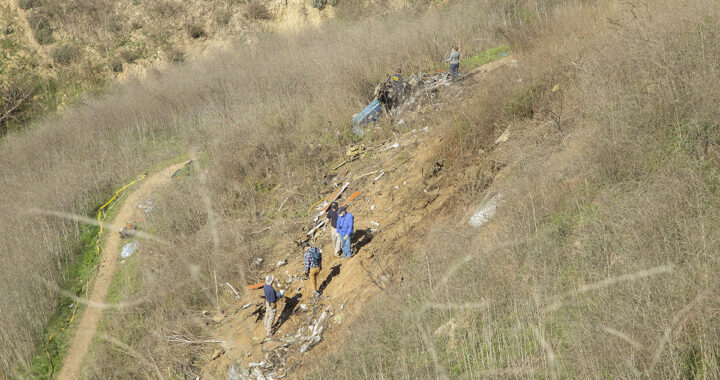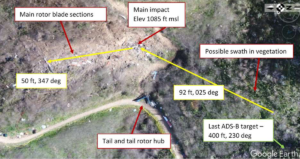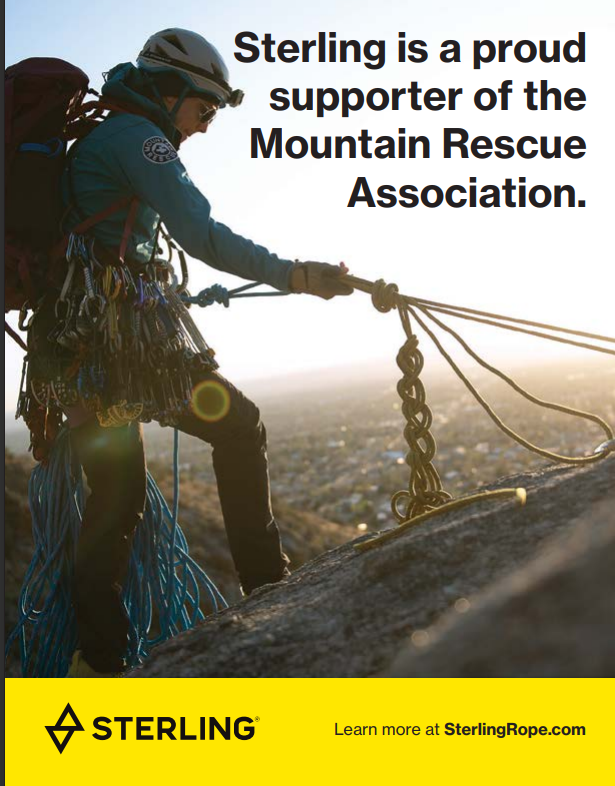Rick Lindfors – Meridian Editor in Chief
Calabsas, Calif – David Katz knew something was up when a teammate on Malibu SAR called him. It was January 9th, 2020, and his teammate told him there was a call for a possible aircraft down near Malibu Creek State Park. Katz made a series of phone calls to see where other Malibu SAR teammates were and dispatch additional assets. Katz happened to be ten minutes from the crash site and heard a flurry of police and fire traffic when he turned on his radios. Katz parked, grabbed his gear and gathered with other rescuers, seeing a plume of smoke coming from the mountains.
An LA County Fire helicopter was over the site and firefighters were hiking into the scene. Fortunately, the crash hadn’t caused a brush fire with flames contained to the wreckage. Fire radio traffic indicated no survivors at the site and at least three fatalities. A total of nine people had died in the crash, including basketball legend Kobe Bryant and his daughter, Gianna.
Katz decided to return to the sheriff’s station a mile away and retrieve ATV’s. While filling his ATV with gas, news began to spread that Bryant was among the fatalities in the crash. “We knew that this would not be a normal recovery and we needed to get back on scene and secure it,” said Katz.
Katz and his team drove their ATV’s back into the hills. As they progressed, more news began to break about the number of fatalities. It took about 20 minutes for them to make their way into the site. The crash was a horrific sight with the helicopter wreckage scattered across the hillside. Katz, who had been with the team since 1990, had never seen anything like it. He and a teammate parked their ATV’s 200 yards away and walked in, making their way past pieces of the helicopter and to the fuselage, where they saw the bodies of passengers nearby. Some of the wreckage was still on fire and sent smoke into the low-lying fog just over the top of the hill. The landscape smelled of jet fuel and magnesium.
Katz and his teammate met an LASD deputy at the other side of the crash, separated by more molten wreckage that they could not step across. He had located additional fatalities. The SAR volunteers continued to move around the site, determining its size and what they would need to recover the bodies.
Specialized hazmat teams were called in to extinguish the fire while additional deputies along with federal and local investigators secured the area and processed the scene. The coroner authorized the removal of three bodies on the first night after the crash, with Malibu SAR bringing them out with a litter and wheel. The rest would be brought out the next day. Rescuers were already strained since they had just completed a two-day snow and ice training. Montrose Search and Rescue was called in to provide additional support. Malibu SAR requested six rescuers and Montrose sent 11 bringing the total number of SAR volunteers to 34.
Day two of the recovery was much more coordinated and calm compared to the chaos of day one. Some of the bodies required technical rope systems to move. Because of a lack of anchors in the hill, rescuers hammered mountaineering pickets into the dirt for rigging. Some team members were tasked with a fine grid search, making sure all human remains were accounted for.
After the recovery was complete, Malibu SAR found themselves caught up in the scandal that followed. Allegations surfaced that some responders had taken or shared photos of the crash site. “Within a couple of days of the incident, everybody that was on scene of the incident was called in to the station,” said Katz. “Everyone was interviewed with regard to whether or not they took or received any photos or video of the scene. We really didn’t know what was going on at that point.” Katz was later called in for a deposition, recounting the operations as well as any instructions he gave or received. Katz, a corporate lawyer by day, was no stranger to depositions. He had been told on day one of the mission that no pictures were to be taken. According to Katz, about 50 people were deposed. Los Angeles County Sheriff Alex Villanueva later reported that eight LASD deputies had taken or shared photos of the site. Lawsuits over the photos are still playing out in court. None of the Malibu SAR members were implicated in the scandal.
While the immediate gravity of the situation of the crash to the general public was the passing of Bryant, the involvement of children also weighed on Katz and his team. Katz and many of his colleagues are parents. Three of the crash victims were 13 years old. “There was a lot of mental, emotional baggage related to it,” said Katz, noting the intensity of the search for human remains on day two of the operation. “The fact that Kobe was involved made it a more noteworthy incident. It didn’t change the fact that… families had this horrific situation.”
An LASD psychologist spoke with the team as a group and with individuals. One member considered retiring. Another sought help after lashing out at a team member. Almost two years later, Katz doesn’t have flashbacks of what happened anymore.
Photos
Debris field – Investigators survey the site of the helicopter crash in Calabasas, Calif (NTSB)
NTSB Crash map – A map and diagram showing the locations of crash debris and extent of the crash site (NTSB)




